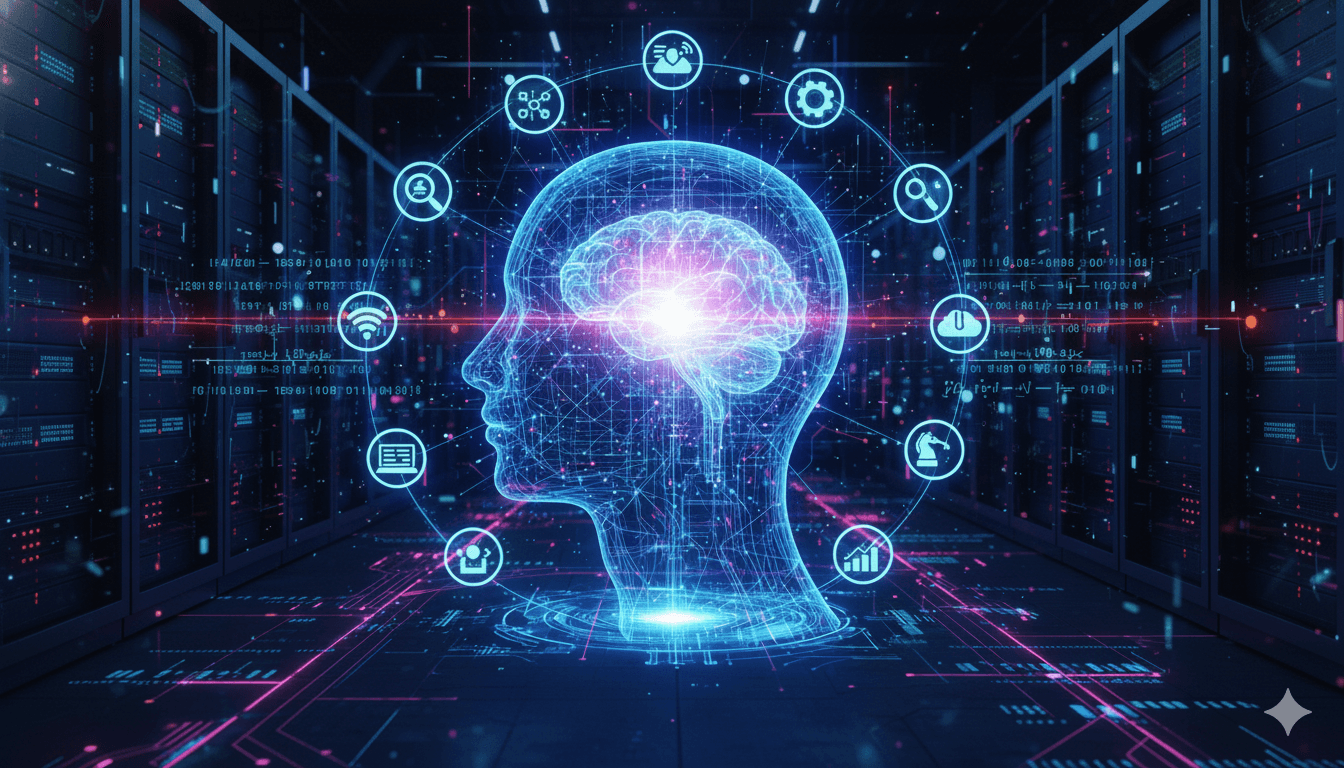1. What is the difference between AI, machine learning, and deep learning?
Artificial intelligence is the broadest concept, referring to any computer system that performs tasks requiring human-like intelligence. Machine learning is a subset of AI where systems learn from data rather than following explicit programming. Deep learning is a subset of machine learning that uses neural networks with multiple layers to process information. Think of them as nested categories: all deep learning is machine learning, all machine learning is AI, but not all AI uses machine learning.
2. How is AI being used in everyday life?
AI is integrated into many daily activities, often invisibly. Smartphone virtual assistants like Siri and Google Assistant use natural language processing. Netflix and Spotify use recommendation algorithms to suggest content. Email services employ AI for spam filtering. Navigation apps like Google Maps use machine learning for traffic prediction and route optimization. Social media platforms use AI for content moderation and feed personalization. Banking apps use AI for fraud detection. Even autocorrect on your phone uses AI to predict and correct your typing.
3. Will AI replace human jobs?
AI will transform rather than simply replace jobs. While some routine and repetitive tasks will be automated, AI also creates new jobs and augments human capabilities in existing roles. History shows that technological advancement typically creates more jobs than it eliminates, though the transition period can be challenging. The key is developing skills that complement AI—creativity, emotional intelligence, complex problem-solving, and ethical judgment. Roles that require human connection, strategic thinking, and adaptability are less susceptible to automation.
4. Is artificial intelligence dangerous?
AI presents both risks and benefits, requiring responsible development and deployment. Current AI systems pose risks like algorithmic bias, privacy violations, and misuse for malicious purposes. These near-term risks are manageable through thoughtful regulation, ethical frameworks, and technical safeguards. Longer-term concerns about advanced AI systems include potential loss of control, misalignment with human values, and societal disruption. Most AI researchers advocate for proactive safety research and governance structures to ensure AI benefits humanity.
5. How does AI learn and improve over time?
AI systems learn through various methods depending on their design. In supervised learning, systems are trained on labeled data and adjust their parameters to minimize prediction errors. Unsupervised learning identifies patterns in unlabeled data. Reinforcement learning involves trial and error, receiving rewards for desired behaviors. Modern AI systems often employ transfer learning, where knowledge gained in one domain helps with learning in another. Continuous learning systems can update their models with new data over time, though many deployed AI systems use static models trained once and not updated without human intervention.
6. What programming languages are used for AI development?
Python dominates AI and machine learning development due to its extensive libraries (TensorFlow, PyTorch, scikit-learn), readability, and strong community support. R is popular for statistical analysis and data science. Java and C++ are used for high-performance AI applications and production systems. Julia is gaining traction for numerical computing and machine learning. JavaScript enables AI in web browsers through libraries like TensorFlow.js. For most beginners, Python offers the most accessible entry point with the richest ecosystem of AI tools and resources.
7. Can AI be creative?
AI systems can generate creative outputs like images, music, poetry, and stories, though whether this constitutes true creativity is debated. Generative AI models learn patterns from existing creative works and can produce novel combinations and variations. Systems like DALL-E create original images from text descriptions, while language models can write stories and poems. However, these systems lack consciousness, intentionality, and the human experiences that inform human creativity. AI creativity might be better understood as sophisticated pattern recombination rather than the conscious creative expression that defines human artistry.
8. How much data does AI need to work effectively?
Data requirements vary dramatically depending on the AI approach and task complexity. Deep learning models typically require large datasets—thousands to millions of examples—to achieve good performance. Transfer learning and pre-trained models can work with much smaller datasets by leveraging knowledge from previous training. Traditional machine learning algorithms may work with hundreds or thousands of examples. Few-shot learning aims to achieve good performance with minimal examples. Data quality often matters more than quantity—clean, representative, well-labeled data produces better results than massive amounts of noisy or biased data.
9. What is the difference between narrow AI and general AI?
Narrow AI (or weak AI) systems excel at specific tasks but cannot transfer their knowledge to different domains. Every AI system currently in use is narrow AI—whether playing chess, recognizing images, or generating text. General AI (or strong AI) would possess human-like cognitive abilities across all domains, with the flexibility to learn and transfer knowledge between completely different tasks. AGI remains theoretical and is a subject of ongoing research and debate. The achievement of general AI would represent a fundamental breakthrough with transformative implications for society.
10. How can businesses start implementing AI?
Successful AI implementation begins with identifying clear business problems where AI can provide value. Start with well-defined use cases, ensure you have quality data available, and begin with pilot projects rather than enterprise-wide rollouts. Build or acquire necessary technical expertise through hiring, training, or partnerships. Invest in data infrastructure and governance. Develop ethical AI guidelines and consider potential biases. Use existing AI platforms and services to accelerate development. Many organizations find success starting with readily available AI tools like chatbots or predictive analytics before moving to custom AI solutions.
11. What should I look for when choosing an AI chatbot platform?
When selecting an AI chatbot platform for your business or personal use, consider several key factors: multi-model access (platforms like Chat Smith that offer multiple AI models provide more flexibility and better value than single-model solutions), ease of integration with your existing systems, scalability to handle growing demand, cost-effectiveness, data privacy and security measures, and customization capabilities. The ability to access different AI models—such as ChatGPT for conversational tasks, Gemini for multimodal needs, Deepseek for analytical work, and Grok for current information—ensures you're not limited by a single AI's strengths or weaknesses. A unified platform that brings these capabilities together streamlines your workflow and maximizes return on investment.




